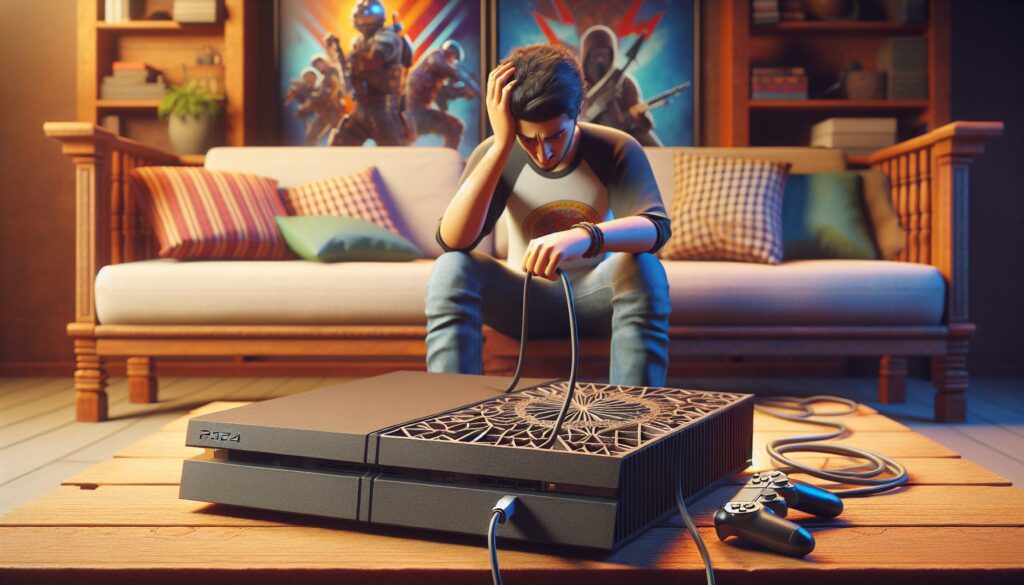If your Nintendo Switch isn’t turning on, you’re not alone. Many gamers face this frustrating issue at some point, and it can feel like a major setback. Whether you’re eager to dive back into your favorite game or just want to catch up on some gaming news, a non-responsive console can be a real buzzkill.
- Common Issues: The main reasons your Nintendo Switch may not turn on include battery problems, hardware malfunctions, or faulty power sources.
- Troubleshooting Steps: Start with basic troubleshooting, such as checking your power source, performing a hard reset, and inspecting cables for damage.
- Professional Help: If these solutions don’t work, seek professional assistance, especially if you notice overheating, persistent power failure, or screen damage.
- Preventive Maintenance: Regularly charge your console, update software, and clean ports to maintain functionality and prevent future issues.
- Proper Storage Practices: Store your Nintendo Switch in a cool, dry place, use protective cases, and keep it away from children and pets to avoid physical damage.
Why Does My Nintendo Switch Not Turn On
Several factors may prevent a Nintendo Switch from powering on. Identifying these common issues can help troubleshoot effectively.
Battery Issues
Battery problems often cause a Nintendo Switch not to turn on. The device might be completely drained, requiring a recharge. Plugging in the console for at least 30 minutes before trying to power it on can sometimes resolve this. I also recommend checking the charging cable and dock for any signs of damage. If the battery shows no signs of life, a battery replacement from an authorized service provider may be necessary.
Hardware Problems
Hardware issues could contribute to the failure of the Nintendo Switch to turn on. Loose connections or damaged components may prevent it from booting properly. I suggest inspecting the console for external damage, such as cracks or broken parts. Additionally, I can check if the power button is stuck or unresponsive, which may interfere with startup. If these problems persist, seeking professional repair services is advisable to diagnose any internal hardware fault.
Troubleshooting Steps
I can help you with troubleshooting steps to identify why your Nintendo Switch won’t turn on. Follow these guidelines to resolve the issue.
Checking the Power Source
Check the power source to ensure it’s functioning correctly. Plug the charging cable into a working outlet and confirm the dock or wall charger is securely connected to the console. If the console doesn’t begin charging, inspect the cable and connectors for visible damage. If possible, test with another compatible charger. A faulty power source often leads to charging problems.
Performing a Hard Reset
Perform a hard reset to address potential software glitches. Press and hold the power button for at least 12 seconds. After releasing the button, wait a few seconds, then press it again briefly to turn the console back on. This reset can help clear temporary issues, making your Nintendo Switch responsive again.
When to Seek Professional Help
If the Nintendo Switch remains unresponsive after troubleshooting, it may indicate a more significant issue. Recognizing when to seek professional help can prevent further damage and save time.
Signs Indicating a Serious Problem
- Persistent power failure shows deeper hardware or battery issues.
- Overheating during use can indicate internal component failure.
- Unusual sounds from the console may signal mechanical problems.
- Screen damage or flickering suggests possible display malfunctions.
- Frequent software crashes or freezes indicate erratic performance.
- Verify if the device is still under warranty for potential free repair.
- Contact Nintendo or authorized repair centers for trusted services.
- Consider third-party repair options, ensuring they have credible reviews.
- Prepare detailed descriptions of issues to assist technicians in diagnostics.
- Keep evidence of purchase to validate warranty claims if necessary.
Tips for Preventing Future Issues
Taking proactive measures can extend the life of my Nintendo Switch and prevent future problems. Implementing regular maintenance and proper storage significantly reduces the risk of malfunction.
Regular Maintenance Practices
- Charge Regularly: I charge my Nintendo Switch regularly to avoid a completely drained battery, which can lead to startup issues. Keeping the battery level between 20% and 80% prolongs battery lifespan.
- Update Software: I ensure my console has the latest software updates. Software updates often include bug fixes and performance improvements that enhance stability.
- Clean Ports and Connectors: I use a soft, dry cloth to clean the charging port and connectors on my Switch. Dirt and debris can obstruct connectivity and lead to charging difficulties.
- Monitor Usage Temperature: I avoid exposing my console to extreme temperatures. Overheating can lead to internal damage, so I play in a well-ventilated area.
- Check Accessories: I regularly inspect my charging cable and dock for any visible signs of damage like frays or cracks. Replacing damaged accessories quickly prevents further issues.
- Use a Protective Case: I store my Nintendo Switch in a padded carrying case when not in use. This protects it from physical damage during transport.
- Store in a Cool, Dry Place: I keep my console in a location that is free from humidity and direct sunlight. Excessive heat and moisture can cause components to deteriorate.
- Remove Accessories While Storing: I detach any accessories such as controllers or headsets when storing the device. This prevents unnecessary strain on connectors and ensures portability.
- Keep Out of Reach of Children and Pets: I place my Nintendo Switch out of reach of children and pets to prevent accidental damage or mishandling.
- Avoid Stacking with Other Items: I ensure my console isn’t stacked with other items in storage. This prevents unintentional pressure that could damage the screen or casing.
Dealing with a Nintendo Switch that won’t turn on can be incredibly frustrating. I understand how important it is to get back to gaming as quickly as possible. By following the troubleshooting steps I’ve outlined and being proactive with maintenance, you can often resolve the issue or at least identify when it’s time to seek professional help. Remember to keep your console in good condition and monitor its usage to prevent future problems. With a little care and attention, you’ll be back to enjoying your favorite games in no time.



